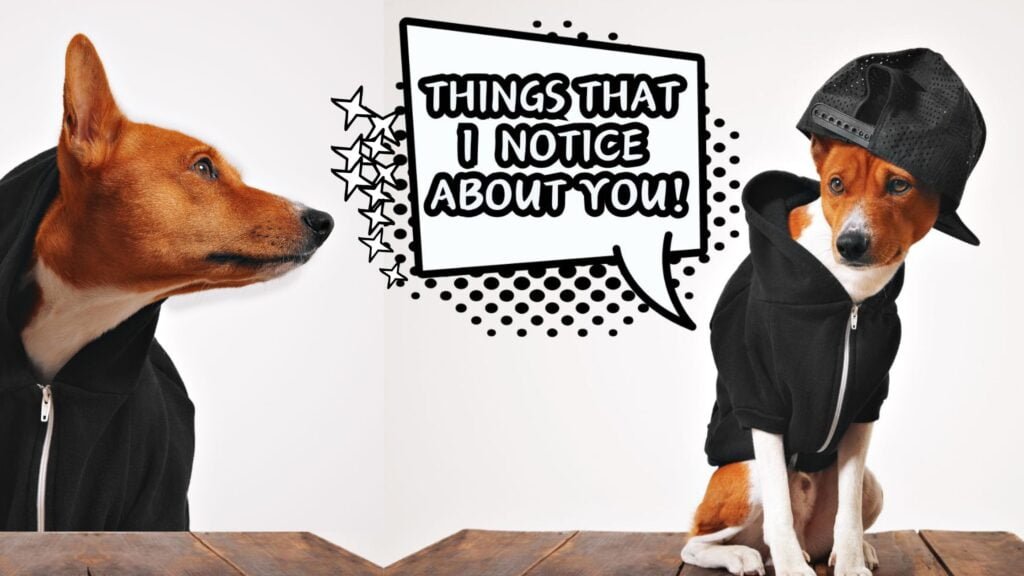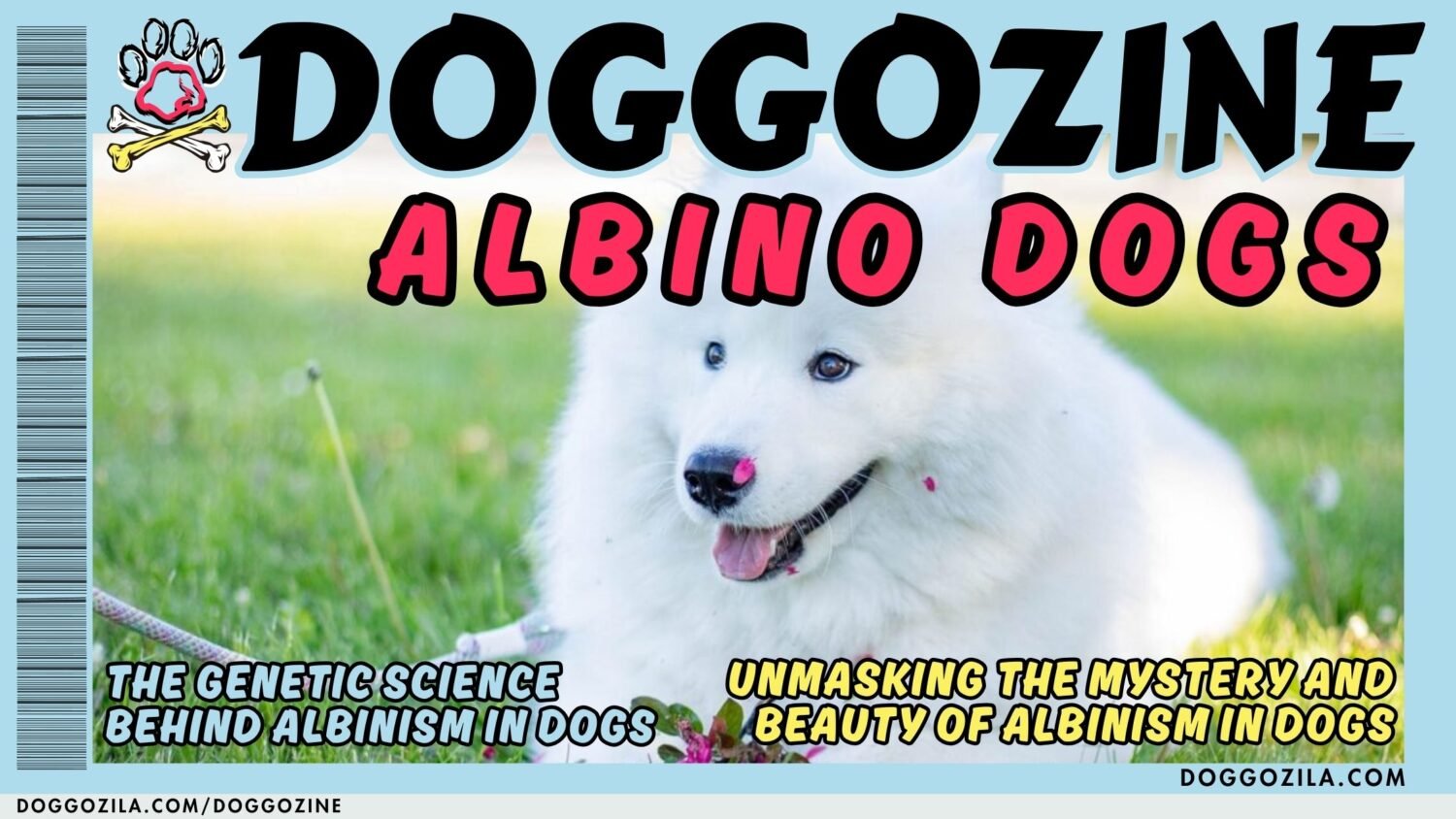LIVING WITH A VISUALLY IMPAIRED OR BLIND DOG
Just as we grow old, our pets age, and they may experience various health issues, including vision problems such as losing their sight. It can be a challenging and emotional time for both the pet and their owner. However, with the right knowledge and care, living with a visually impaired or blind dog can be a rewarding experience.
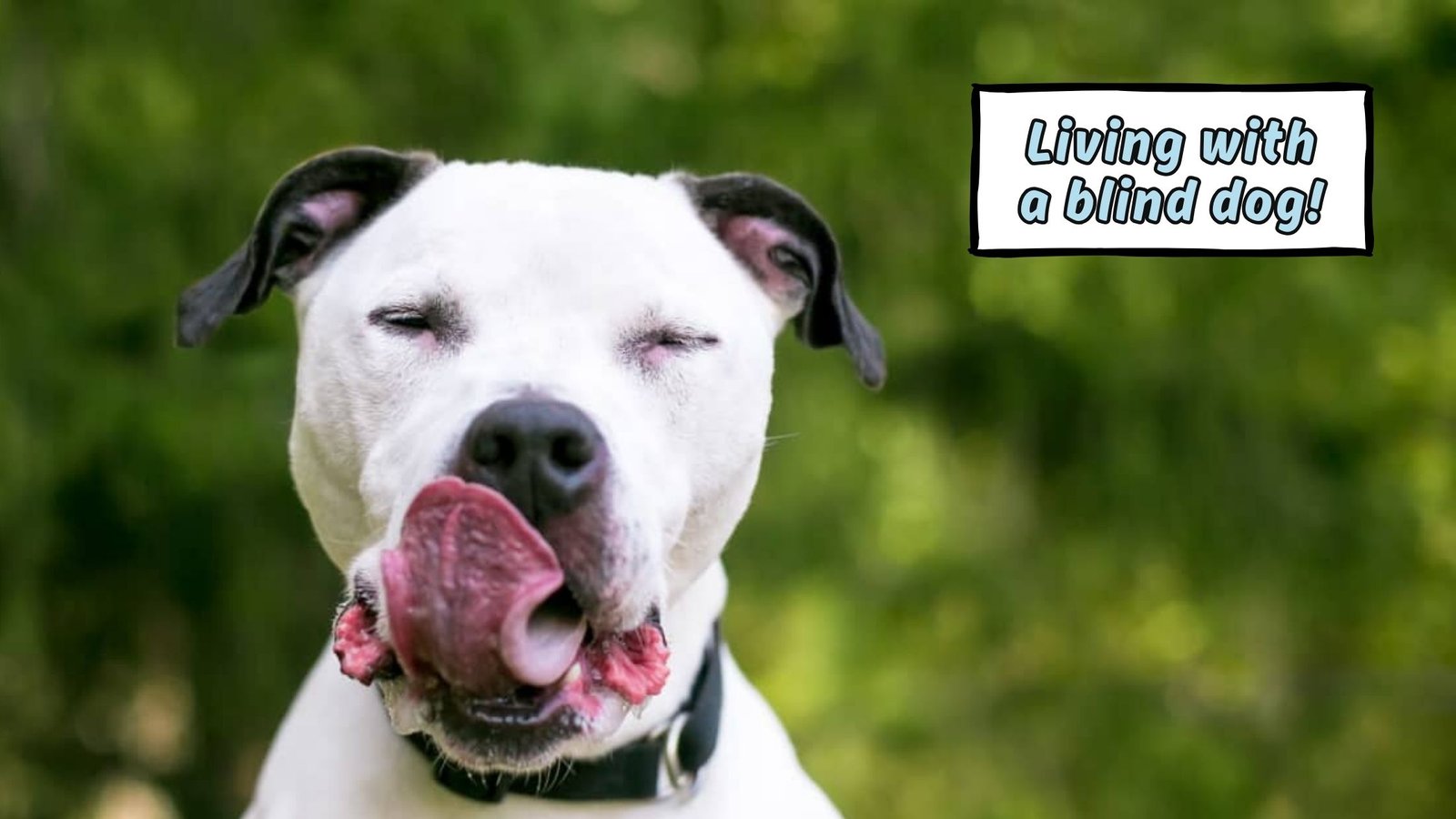
UNDERSTANDING VISION LOSS IN DOGS
Before we delve into the practical aspects of living with a visually impaired or blind dog, it’s essential to understand the causes of vision loss in dogs.
Some common reasons include:
- Cataracts
- Progressive retinal atrophy
- Glaucoma
- Age-related macular degeneration
It’s crucial to consult with a veterinarian to determine the underlying cause of your dog’s vision loss and explore any available treatment options.
Creating a Safe Environment for a blind dog
When living with a visually impaired or blind dog, creating a safe environment is paramount.
Here are some tips to ensure their safety:
- Keep the environment consistent: Avoid rearranging furniture and objects to prevent your dog from bumping into them.
- Use scent cues: Place scented markers or essential oils near objects or areas that your dog needs to navigate, such as food and water bowls or the entrance to the backyard.
- Install baby gates or barriers: Use these to restrict access to stairs or other areas that may pose a risk to your visually impaired or blind dog.
- Remove hazards: Ensure that the floor is free from clutter, loose wires, or any other objects that could trip or injure your dog.
Talking and Training for a blind dog
Good communication and training are key when living with a dog who can’t see.
Here are some tips to talk with your furry pal:
- Verbal cues: Use consistent verbal cues to guide your dog. For example, use words like “step up” or “step down” when approaching stairs.
- Touch cues: Incorporate touch cues such as gentle taps or pats on their shoulder or back to indicate directions or commands.
- Clicker training: Consider using a clicker to reinforce positive behavior and help your dog understand commands.
- Positive reinforcement: Reward your dog with treats and praise when they exhibit desired behavior. This will help them associate positive experiences with certain actions.
Remember, training a visually impaired or blind dog requires patience and consistency. Always ask for guidance from a professional dog trainer if needed.
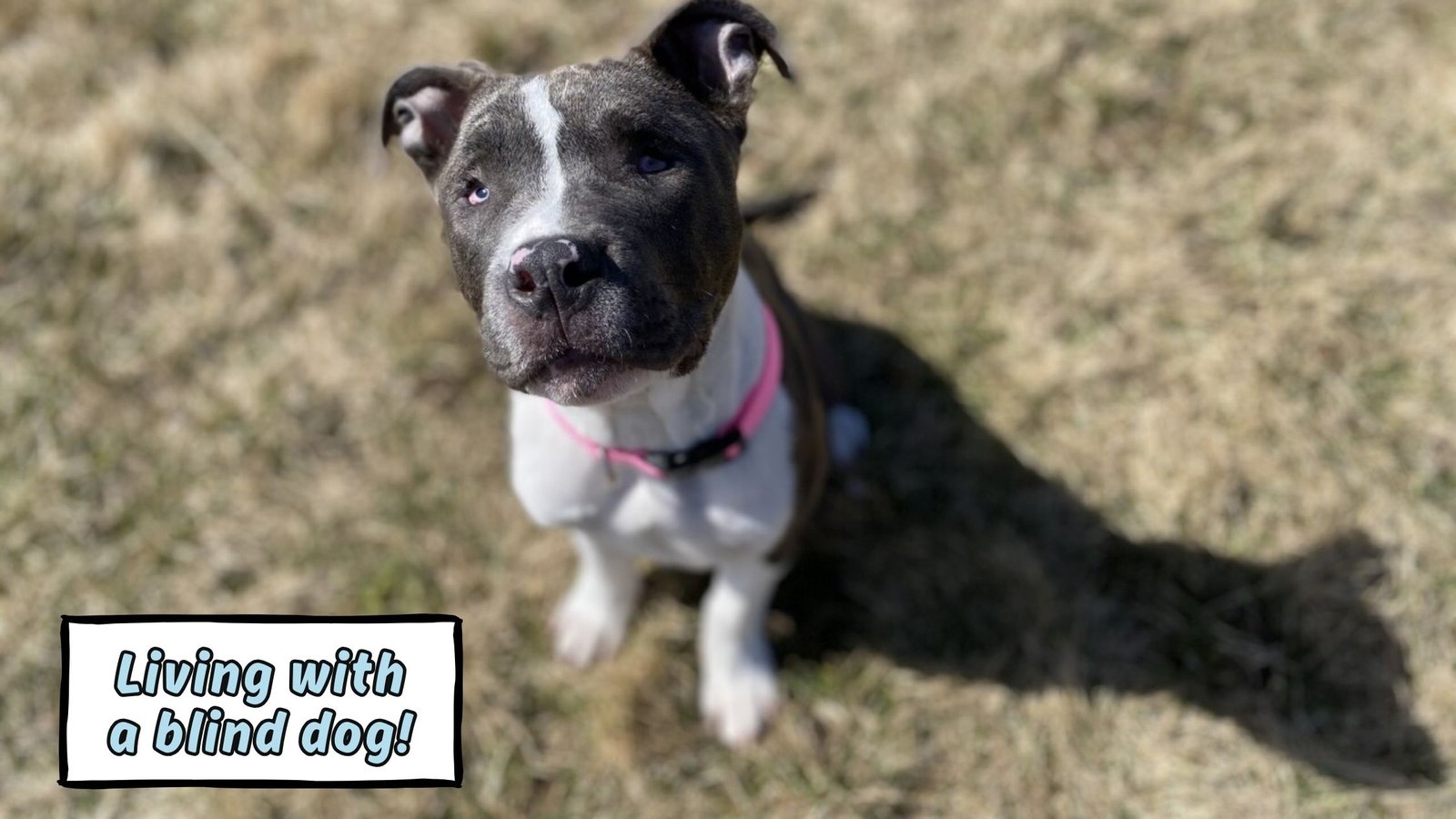
EXERCISE AND FUN FOR BLIND DOG
All dogs need exercise and fun things to do, even ones who can’t see.
Here are some ideas to keep your blind dog active and entertained:
- Take short walks in places they know. Let them smell and explore.
- Play smell games. Hide scented toys or treats for them to find.
- Play games! Give your dog puzzle toys with treats inside. They need to use their brain to get the snacks.
- Train your dog regularly. It keeps them smart and makes you closer.
Tools to help blind dogs
There are things to help blind dogs move around:
- Halos and vests protect dogs from bumping into things.
- Put braille signs on stuff at home. This way your dog knows where they are.
- Use scents or sounds to mark areas or objects. It helps dogs find their way.
- Join groups online or nearby with other owners of blind dogs. You can share tips.
Support for you and your blind dog
Caring for a blind dog can be hard.
Make sure you get help too:
- Talk to vets who know about blind dogs. They can advise you.
- Tell friends and family your struggles. They can listen and comfort you.
- Consider therapy: If you find yourself struggling emotionally, consider seeking therapy or counseling to help you navigate the challenges of caring for a visually impaired or blind dog.
Living with a visually impaired or blind dog requires patience, understanding, and adaptability. By creating a safe environment, communicating effectively, providing appropriate exercise and enrichment, utilizing assistive devices, and seeking emotional support, you can ensure a fulfilling and happy life for both you and your furry companion.
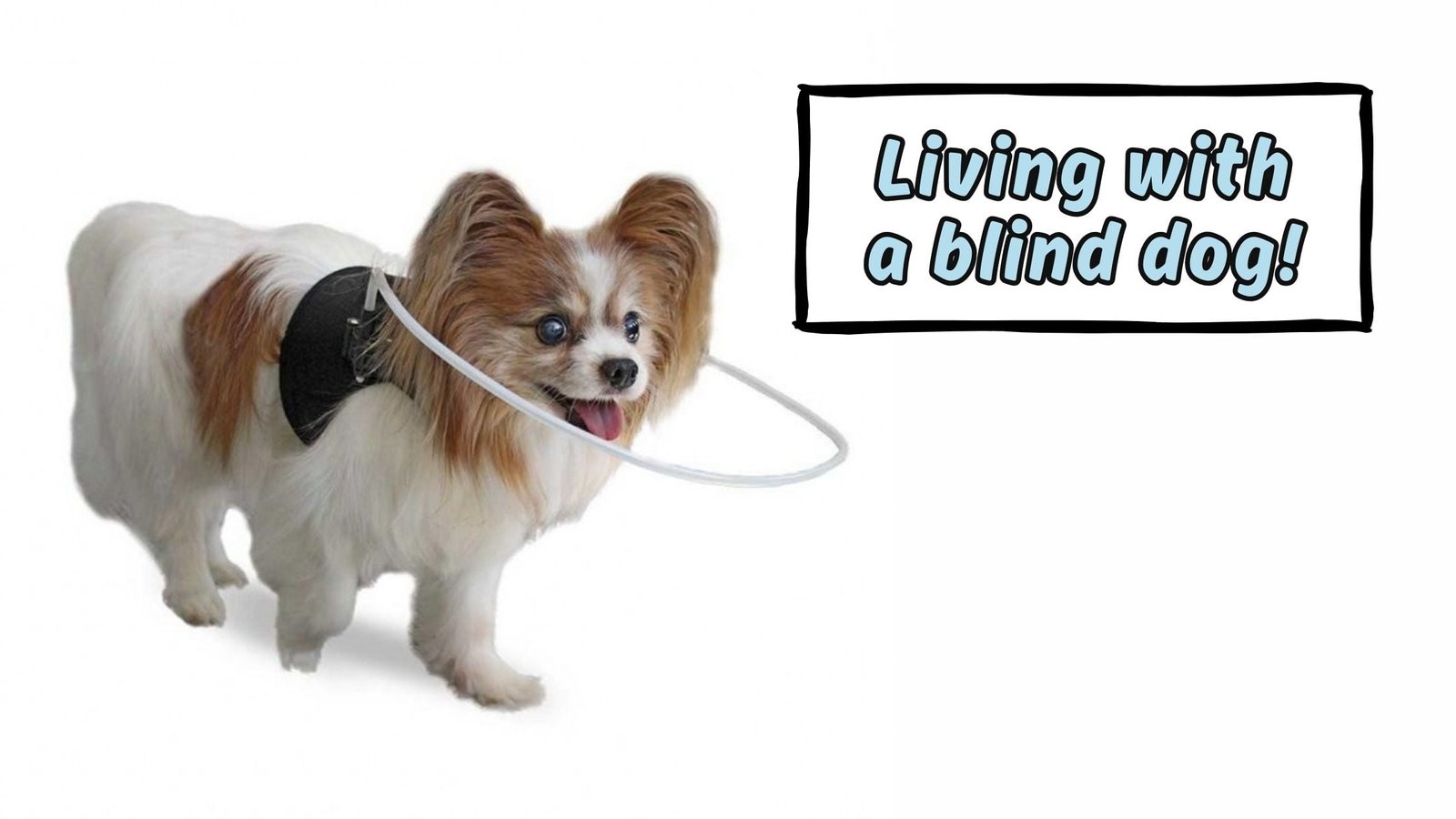
TIPS AND ADVICE FOR OWNERS OF BLIND DOGS
Keeping Your Blind Dog Happy and Healthy
Discovering that your beloved furry friend has become blind or has been blind since birth can be a challenging experience for any dog owner. However, with the right knowledge and guidance, you can ensure that your blind dog leads a fulfilling and happy life. Today we will provide you with valuable tips and advice on how to care for your blind dog, keeping them healthy, safe, and content.
Understanding Your Blind Dog’s Needs
Before diving into specific tips and advice, it’s crucial to understand the unique needs of blind dogs. Dogs rely heavily on their senses, especially their vision, to navigate the world around them. When a dog loses their sight, their other senses, such as hearing, smell, and touch, become even more important.
Blind dogs require a safe and predictable environment to thrive. They rely on familiar scents, sounds, and textures to navigate their surroundings. As a responsible owner, it’s essential to create a consistent routine and provide them with the necessary support and accommodations.
Making a Safe Space for Your Blind Pup
The first step to care for a blind dog is making their area safe. No dangers allowed!
Here are some tips:
- Clear the Area: Remove things your dog can bump into or trip over. A tidy space prevents accidents.
- Block Off Danger Zones: Use gates or barriers to keep your pup away from stairs, balconies, or other risky spots.
- Secure the Yard: Make sure your outdoor space has a sturdy fence so your blind buddy can’t wander off.
- Add Smelly Markers: Place scented oils or drops on objects to help your dog sniff out important places.
Keeping a Routine for Your Blind Companion
Blind dogs feel calmer with a regular schedule. Having set daily tasks gives them security.
What to Consider:
- Mealtimes: Feed your dog at the same times daily. Use word cues or place bowls in a fixed spot.
- Walking Routes: Choose routes you can repeat so your dog learns the smells and sounds along the way.
- Potty Breaks: Take your dog to pee and poop in the same area each time. Use words to signal what this place is for.
- Playtime fun: Do games and get exercise with your blind pup. Use toys that make noise or smell good.
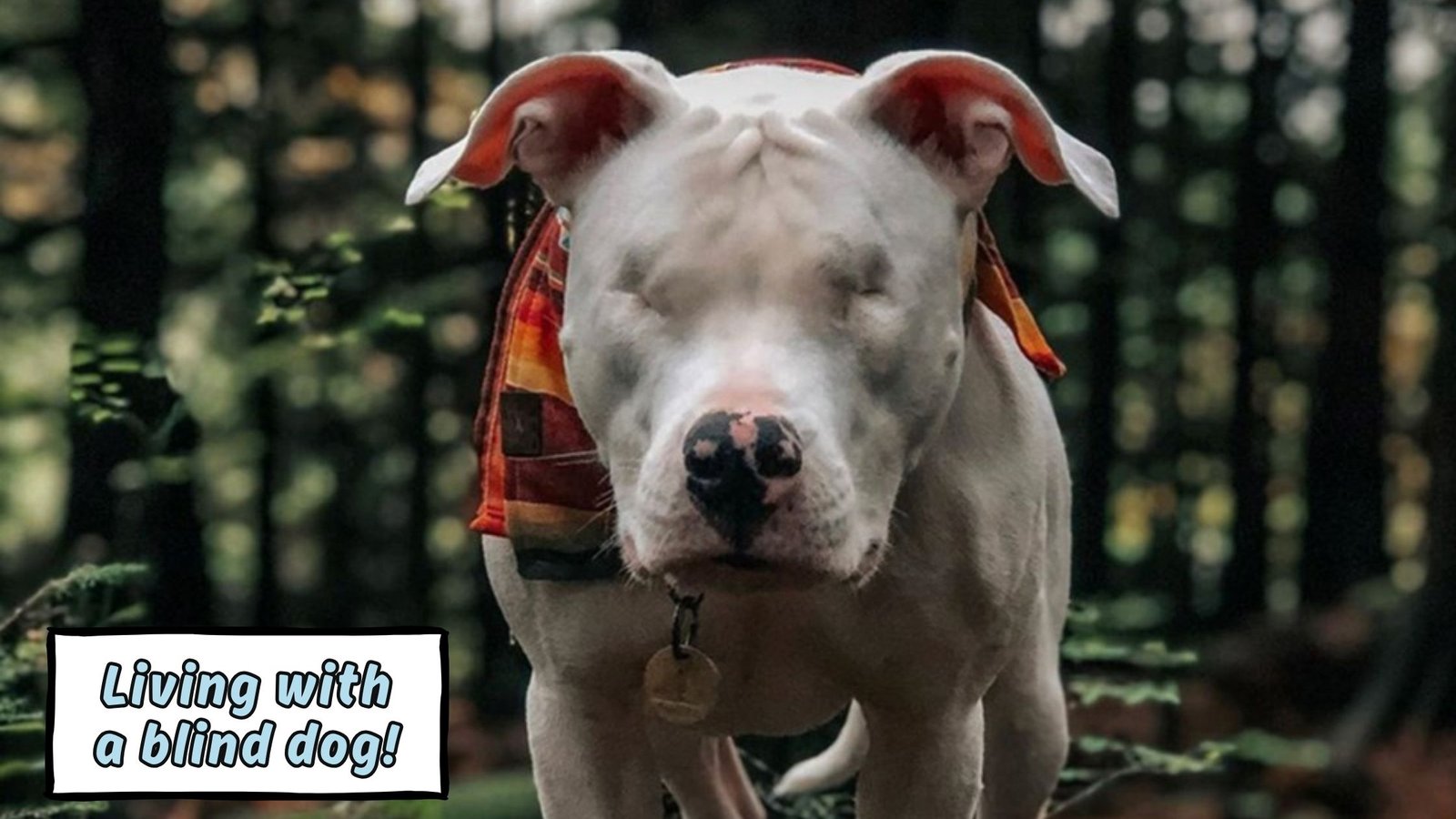
HELPING BLIND DOGS UNDERSTAND YOU BETTER
It’s key to communicate well with a blind dog. Since they can’t see you, find other ways to bond and give them information.
Here are some tips for better communication:
- Use the same words: Say words like “sit,” “stay,” or “come” so your pup knows what to do.
- Guide with gentle touch: Tap their shoulder lightly to show them a new direction when walking.
- Use familiar smells: Put certain scents on their bed or toys so they recognize them.
- Praise and treats: Give your pup praise and yummy treats when they do something good. This helps them learn.
Fun Activities to Keep Their Mind Active
Blind dogs need activities to stay entertained and sharp.
Here are some ideas to keep their mind busy:
- Sniff games: Your pup has an amazing sense of smell. Hide smelly treats or toys for them to find.
- Getting puzzle toys can help your blind dog think and solve problems. These toys hide treats or make your dog move things to get rewards.
- Keep training your blind dog with good ways to learn. Teach them new commands and tricks to make their minds work hard.
- Play games with your blind dog using toys that make sounds or have different textures. This will keep your dog interested and entertained.
Regular Veterinary Visits
Like all dogs, blind dogs need to see the vet regularly to stay healthy.
Here are some important things to think about:
- Check your dog’s eyes even if they can’t see. Regular vet visits can catch any problems or infections.
- Take your dog for check-ups to make sure they are healthy, get vaccinations, have their teeth cleaned, and stay at a good weight.
- Give your blind dog any medicine or supplements the vet recommends if they have health issues.
Love, Patience, and Change
Caring for a blind dog needs patience, love, and being able to change. Remember that your dog’s blindness does not define them. With your help, they can still have a happy and good life. Enjoy the journey and the special connection you have with your blind dog.
What to Know About Having a Blind Dog
Though having a dog that can’t see might seem hard, you can give them a good life if you take the right steps. Make your home safe by removing things they could bump into or trip over. Also, keep their area free of clutter. Set a routine so they know when it’s time for meals, walks, and playtime. Use words and sounds to communicate with your dog. Give them toys that make noise or have different textures. Take them on walks but keep them on a leash. See the vet regularly to check for any health problems.
Want to learn more? Look into caring for pets without sight!





